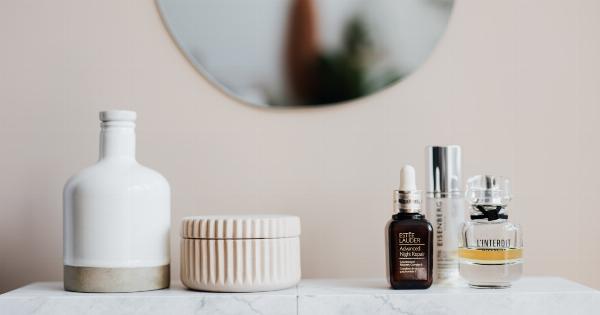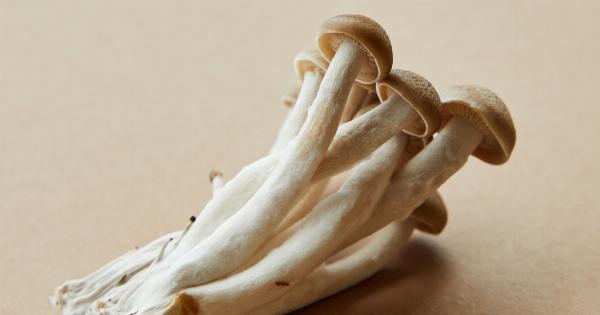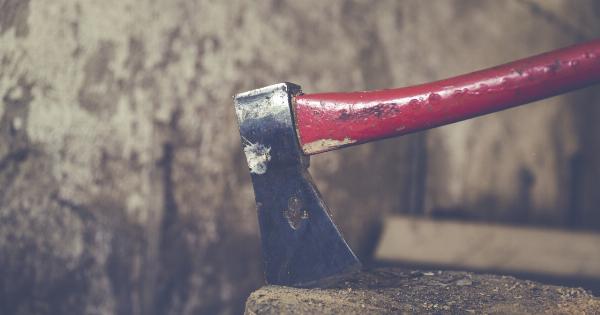Having well-maintained and healthy nails is something that many people strive for. However, sometimes we unknowingly engage in habits or behaviors that can seriously damage our nails.
In this article, we will discuss 30 different ways in which you can ruin your nails. By being aware of these practices, you can avoid them and ensure the long-term health and beauty of your nails.
1. Biting Your Nails
Nail biting is a common and unhealthy habit that can not only ruin the appearance of your nails but also cause harm to your overall oral health. The constant biting can weaken the nails, making them more prone to breakage and infections.
It is essential to find alternative ways to manage your stress or anxiety rather than resorting to this damaging habit.
2. Using Nails as Tools
One of the most common mistakes people make is using their nails as tools for various tasks such as opening cans or scratching off stickers. This can lead to nail breakage, bending, or even worse, tearing off the nail bed along with the nail.
Always use appropriate tools instead of relying on your nails, to preserve their strength and integrity.
3. Excessive Use of Harsh Nail Polish Removers
Nail polish removers contain acetone or other harsh chemicals that can strip your nails of their natural oils, making them brittle and weak.
Frequent and excessive use of nail polish removers can lead to dryness, splitting, and discoloration of the nails. Consider opting for acetone-free or gentle nail polish removers to protect the health of your nails.
4. Ignoring Proper Nail Care
Not following a proper nail care routine can significantly contribute to the deterioration of your nails.
Neglecting to trim your nails regularly, skipping moisturization, and failing to protect your nails with a base coat can weaken them and cause them to become susceptible to damage.
5. Incorrect Nail Filing Technique
The way you file your nails can greatly impact their strength and shape. Using a rough or back-and-forth filing motion can weaken the nails, making them more prone to peeling and breaking.
Instead, opt for a gentle filing technique, always filing in one direction, preferably from the sides towards the center.
6. Excessive Use of Gel or Acrylic Nails
Gel and acrylic nails may enhance the appearance of your nails temporarily, but excessive and continuous use can take a toll on their health.
These artificial nail enhancements can weaken and thin out your natural nails, making them more vulnerable to damage and infections. Take breaks between applications to allow your natural nails to recover.
7. Picking or Peeling Off Nail Polish
Peeling or picking off your nail polish can cause significant damage to the top layer of your nails, leaving them weak and prone to breakage.
Always use a gentle nail polish remover and cotton pads or wipes to remove nail polish completely without damaging the nails.
8. Excessive Water Exposure
Exposing your nails to excessive water for extended periods, such as dishwashing without gloves or prolonged swimming, can weaken and dehydrate them. This can lead to brittle nails that are prone to splitting and breaking.
Wear gloves while doing household chores involving water to protect your nails.
9. Using Nails to Remove Hangnails
Using your nails to pick or remove hangnails can not only cause unnecessary pain but also damage the surrounding skin and further create an entry point for infections.
Use sanitized cuticle clippers to carefully trim any hangnails and apply an antibacterial ointment afterward to prevent infections.
10. Overusing Nail Hardeners
While nail hardeners may seem like a quick fix for weak nails, overusing them can actually result in the opposite effect. Nail hardeners contain chemicals that can dehydrate your nails, making them more brittle and prone to breakage.
Limit the use of nail hardeners to avoid damaging your nails further.
11. Skipping Base Coat
Applying a base coat before applying nail polish is crucial as it acts as a protective barrier between your natural nails and the potentially damaging pigments of the polish.
Skipping the base coat can lead to discoloration, staining, and weakening of the nails over time.
12. Using Nails to Open Packages
We often use our nails to open packages or tear off stickers, not realizing the harm it can cause. This can lead to nail breakage, bending, or even nails being torn off the nail bed.
Always use appropriate tools like scissors or a knife to open packages and protect the integrity of your nails.
13. Excessive Hand Washing
While hand washing is essential for hygiene, excessive washing without moisturizing afterward can dry out and weaken your nails.
The repeated exposure to water and harsh soaps can strip the natural oils from your nails, leaving them brittle and susceptible to damage. Remember to replenish moisture by applying hand cream or cuticle oil after washing your hands.
14. Neglecting Cuticle Health
The cuticles play a vital role in protecting the nail bed from infections. Ignoring cuticle health can result in dry, cracked, or overgrown cuticles, making it easier for bacteria or fungi to enter and cause damage.
Gently push back the cuticles after a shower or bath and keep them moisturized with cuticle oil to maintain their health.
15. Continuous Use of Nail Extensions
Just like gel or acrylic nails, constantly having nail extensions can weaken your natural nails over time. The added weight and pressure from artificial extensions can lead to thinning, bending, and even breakage of your natural nails.
Take breaks between nail extension applications to allow your natural nails to recover and strengthen.
16. Skipping Nail Strengtheners
If you have weak or brittle nails, applying a nail strengthener can significantly improve their health and durability. Nail strengtheners contain ingredients that reinforce the structure of the nails, making them less prone to breakage and peeling.
Incorporate a reliable nail strengthener into your nail care routine for optimal nail health.
17. Using Nails as Instrument for Scratching
Using your nails to scratch an itch can lead to microscopic damage to the nail surface, making it rough and susceptible to further breakage.
Instead, use your fingertips or pads of your fingers to alleviate any itching sensation and avoid causing harm to your nails.
18. Not Wearing Gloves While Cleaning
When cleaning with harsh chemical cleaners, not wearing gloves can expose your nails to the damaging effects of these chemicals. Prolonged contact with cleaning products can dry out, discolor, and weaken your nails.
Protect your nails by wearing gloves while cleaning or using any chemicals.
19. Overexposure to UV Lights During Gel Manicures
Gel manicures require the use of UV lights to cure the polish. However, excessive exposure to these UV lights can damage the collagen in your skin and increase the risk of skin aging and even skin cancer.
Apply broad-spectrum sunscreen on your hands before getting a gel manicure to protect your skin from harmful UV rays.
20. Skipping Nail Moisturization
Moisturizing your nails is just as important as moisturizing your skin. Dry and dehydrated nails are more prone to brittleness, peeling, and breakage.
Massage a nourishing cuticle oil or moisturizer into your nails and cuticles regularly to maintain their health and flexibility.
21. Ignoring Signs of Nail Infections
Nail infections can cause severe damage if left untreated. Ignoring signs such as discoloration, swelling, pain, or discharge from around the nails can lead to further complications and possible permanent damage.
If you suspect a nail infection, consult a healthcare professional for proper diagnosis and treatment.
22. Applying Too Many Layers of Nail Polish
Layering on multiple coats of nail polish without allowing each layer to dry properly can lead to smudging and denting.
It also increases the chances of the polish chipping off quickly, causing you to reapply frequently, thereby subjecting your nails to more potential damage. Apply thin, even coats of nail polish and allow each layer to dry completely.
23. Excessive Exfoliation around Nails
While exfoliating the skin around your nails can help remove dead skin cells and keep your cuticles healthy, excessive or aggressive exfoliation can damage the delicate skin and even cause bleeding or infections.
Use a gentle exfoliator and a soft brush to exfoliate around your nails twice a week to avoid overdoing it.
24. Using Harsh Tools for Cuticle Trimming
Using sharp or inappropriate tools to trim your cuticles can lead to injuries, infections, or excessive cutting of the skin. Always use sanitized cuticle clippers or a cuticle nipper specifically designed for this purpose.
Trim only the excess skin and avoid cutting too close to the nail bed.
25. Ignoring Proper Nutrition
Proper nutrition plays a crucial role in maintaining the health of your nails. An inadequate intake of essential vitamins and minerals can result in weak and brittle nails.
Ensure that your diet includes nutrients like biotin, iron, zinc, and vitamins A, C, and E, which are essential for healthy nail growth.
26. Wearing Nail Polish for Prolonged Periods
Leaving the same nail polish on for an extended period without giving your nails a break can cause discoloration and yellowing. It may also result in the nails becoming brittle and weak.
Allow your nails to breathe by giving them breaks between manicures and removing nail polish completely.
27. Using Acetone-based Nail Polish Remover Too Often
While acetone-based nail polish removers can effectively remove stubborn polishes, using them too often can dehydrate and weaken your nails.
Opt for gentle, acetone-free removers whenever possible and reserve the use of acetone-based removers for special occasions or when absolutely necessary.
28. Filing Nails in the Wrong Shape
Not filing your nails in the proper shape can lead to weak spots and breakage. Each nail shape has an ideal filing pattern, such as square, oval, or almond.
Research the best filing technique for your desired nail shape and file accordingly to avoid unnecessary damage.
29. Ignoring Overall Nail Health
The health of your nails is a reflection of your overall well-being. Factors such as hydration, sleep, exercise, and stress management can significantly influence the health of your nails.
Ensure you are taking care of yourself holistically to promote healthy nail growth.
30. Skipping Regular Nail Check-ups
Last but not least, neglecting regular visits to a nail professional or dermatologist can be detrimental to your nail health.
These experts can help identify and treat early signs of any nail diseases or infections, ensuring proper care and preventing further damage.





























